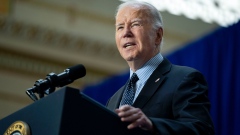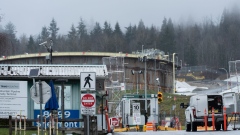Aug 9, 2019
Beyond Saddledome: The pros and cons of Calgary's new arena deal
, BNN Bloomberg
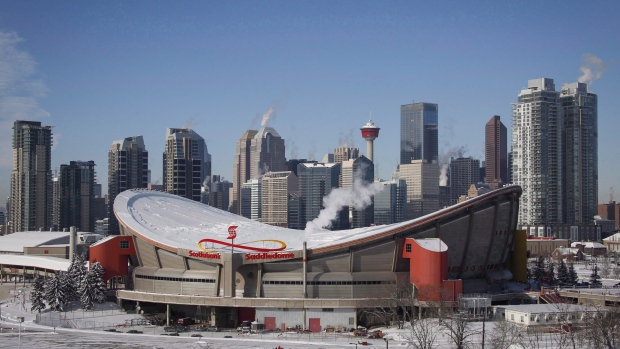
The numbers that have been touted in Calgary’s newly-approved arena deal are huge, but one economics professor is raising doubts about some of them.
Calgary city council approved a $550 million deal to finally build the NHL’s Flames a new arena on July 30, ending more than a decade’s worth of speculation over the team’s long-term home in the city. The total cost will be split evenly between the city and Flames owners Calgary Sports and Entertainment Corporation (CSEC). Construction for the new arena – tentatively dubbed the Calgary Event Centre – is expected to begin in 2021, and while the city estimates the project will return $400.3 million to citizens over the deal’s 35-year term, the city’s acting chief financial officer also reportedly cited the “net present value” of the deal at a $47-million loss.
The problem lies in that $400.3 million figure, according to University of Calgary associate economics professor Trevor Tombe.
“That $400 million number that has been put out and prominently highlighted … is false,” Tombe said in a phone interview. “It’s unquestionably wrong and, I think, a mistake that the city made. Given the rushed timeline, they couldn’t really back off from that number without having a lot of egg on their face.”
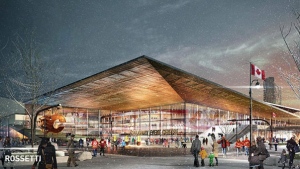
According to Tombe, the $400.3 million return cited by the city of Calgary represents the project’s undiscounted total cashflow, and does not take into account the impact of inflation on ticket tax revenue, for example.
Regardless of the math, Tombe said he supports the city’s initiative to pitch in on paying for the new arena, given that the annual cost to the city’s homeowners would be nominal.
“The question we should ask ourselves is: ‘What does that cost represent for your typical homeowner?’” Tombe asked. “Per year, imagine they take the whole thing. With increased property taxes, for example, it works out to somewhere between $10 and $15 per year, per homeowner, in perpetuity.
“An individual could say: ‘Well, are the largely intangible benefits from the arena and the redevelopment of that area worth 10-to-15 bucks per year?’ ... Personally, I tend to favour this initiative.”
The city sprung into action upon reaching a deal with CSEC on July 23, passing it through council just a week later.
A Toronto-based sports marketing professor says that kind of expediency sends a message to potential investors that the city can get things done.
“Maybe the city has a ‘can-do’ attitude, that when they see a great opportunity they take advantage of it,” Vijay Setlur, sports marketing instructor at York University’s Schulich School of Business, told BNN Bloomberg in a phone interview.
“So, that should look good to, say, developers or to the investment community, if something like that happens quickly. Even if it means upsetting some members of the public who wish there’d been a longer consultation period.”
But Tombe argues that the arena’s relatively quick approval didn’t go over well with Calgarians.
“It’s been a number of years and polls kind of consistently show split opinion on whether the city should be providing funds,” he said.
“But, this [arena] deal that came out on Monday, and then city council voted on it Tuesday of the next week – so, eight days later. There’s pretty overwhelming [public] opposition to that rushed process.”
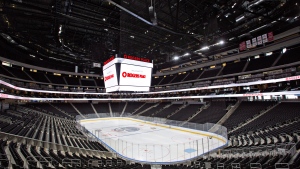
The deal stands as the middle ground between the efforts of two other Canadian NHL teams to get new barns built.
On one hand is Rogers Place, the home of the Edmonton Oilers that opened in 2016 at a total construction cost of $483.5 million. That deal replaced the 44-year-old Northlands Coliseum, costing the city $226 million including $125 million to be collected through ticket surcharges over a 35-year term.
Edmonton’s experience was fresh enough in Calgary’s mind that the city actually compared the two projects on its official FAQ page for the project.
On the other hand, is the ongoing struggle the Ottawa Senators have faced in getting a downtown arena approved, in hopes of moving the team out of its Kanata, Ont. suburb. The last development on that was a mediation attempt that broke down in February.
Setlur said he believes Calgary’s new arena – slated to be built just north of the Scotiabank Saddledome, the Flames’ current home – is founded on lessons from both situations.
“In the case of Edmonton, there were lessons learned from a planning standpoint, but also a location standpoint,” he said. “And from the Ottawa standpoint, what we’re seeing is the importance of location and that’s why the Senators are now looking at building an arena closer to downtown near LeBreton Flats.”
The deal also answers one question that has historically hounded many small-market NHL teams and especially Canadian ones: Relocation.
“To the extent that one might think there’s a risk of the Flames just leaving – I don’t think that’s a legitimate risk, but some people think it is – the deal kind of locks them down for 35 years,” Tombe said.






